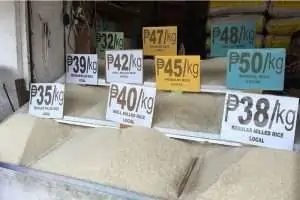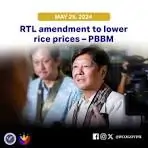Rice Tariffication – Introduction:

Rice is a staple food in the Philippines, and ensuring its availability and affordability is of utmost importance. In 2019, the government introduced the rice tariffication policy to liberalize the rice market and address issues of high prices and low domestic production of rice. This rice tariffication article aims to provide a comprehensive analysis of the rice tariffication policy, its impact on various stakeholders of rice, the challenges faced, and the future prospects for the rice industry in the Philippines.

- Understanding Rice Tariffication:
Rice tariffication is a policy that allows the importation of rice from other countries by imposing tariffs on imported rice. Prior to the implementation of this policy, the National Food Authority (NFA) had a monopoly on rice importation in the Philippines. The objective of rice tariffication is to increase competition, stabilize prices, and promote self-sufficiency in rice production. - Rice Impact on Rice Producers:
The rice tariffication policy has had a significant impact on rice producers in the Philippines. While it has led to lower consumer prices and increased availability of rice, it has also posed challenges for local farmers. The influx of cheap imported rice has put pressure on domestic producers, as they struggle to compete with lower-priced imports. Many small-scale farmers have faced difficulties in selling their produced rice, leading to a decrease in their income and livelihood. - Rice Impact on Consumers:
One of the primary goals of rice tariffication was to lower consumer prices and make rice more affordable for the average Filipino. The rice tariffication policy has been successful in achieving this objective, as it has resulted in a decrease in the retail price of rice. This has provided relief to consumers, particularly those from low-income households who spend a significant portion of their income on food. Such as rice. - Rice Challenges Faced:
The implementation of rice tariffication has not been without challenges. Some of the key challenges of rice tariffication faced include:

Market Volatility: The rice tariffication market is subject to fluctuations in global prices, exchange rates, and weather conditions. These factors can impact the availability and prices of imported rice, making it challenging to stabilize the market.
- Quality Control: Ensuring the quality of imported rice is crucial to protect consumer health and maintain confidence in the product. The government needs to enforce strict quality control measures to prevent the entry of substandard or unsafe rice into the market.
- Support for Farmers: The rice tariffication decrease in income for local farmers due to increased competition from imported rice highlights the need for comprehensive support programs. Providing assistance in the form of subsidies, credit facilities, and technology transfer can help farmers improve their productivity and competitiveness.
- Government Interventions:
To address the challenges faced in the rice industry, the Philippine government has implemented various interventions. These include:
- Rice Competitiveness Enhancement Fund (RCEF): The RCEF aims to provide support to rice farmers by allocating a portion of the tariff revenue to programs that enhance productivity, improve farm mechanization, and provide access to credit and training.
- Price Subsidy Program: The government has implemented a price subsidy program to assist farmers during periods of low prices. Under this program, the government buys rice from farmers at a predetermined minimum price to ensure their income is not severely affected.
- Enhanced Market Information System: The government has developed an enhanced market information system to provide real-time data on rice prices, supply, and demand. This helps farmers and traders make informed decisions and enables the government to monitor market conditions effectively.

- Future Prospects:
The rice tariffication policy continues to evolve, with ongoing efforts to address its challenges and maximize its benefits. Some of the potential future prospects for the rice industry in the Philippines include:
- Increased Productivity: By providing support in the form of technology transfer, training, and access to credit, the government aims to enhance the productivity of rice farmers. This will help improve their competitiveness and reduce the impact of imported rice on their livelihoods.
- Investment in Research and Development: Investing in research and development for rice production can lead to the development of high-yielding, disease-resistant rice varieties. This can contribute to increased self-sufficiency and reduce reliance on imports.
- Sustainable Agriculture Practices: Promoting sustainable agriculture practices, such as organic farming and water-efficient irrigation techniques, can enhance the resilience of rice production in the face of climate change and water scarcity.
- Export Opportunities: The liberalization of the rice market can open up opportunities for Philippine rice exporters to access international markets. This can contribute to the growth of the rice industry and generate additional income for farmers.
You may also like to read:




